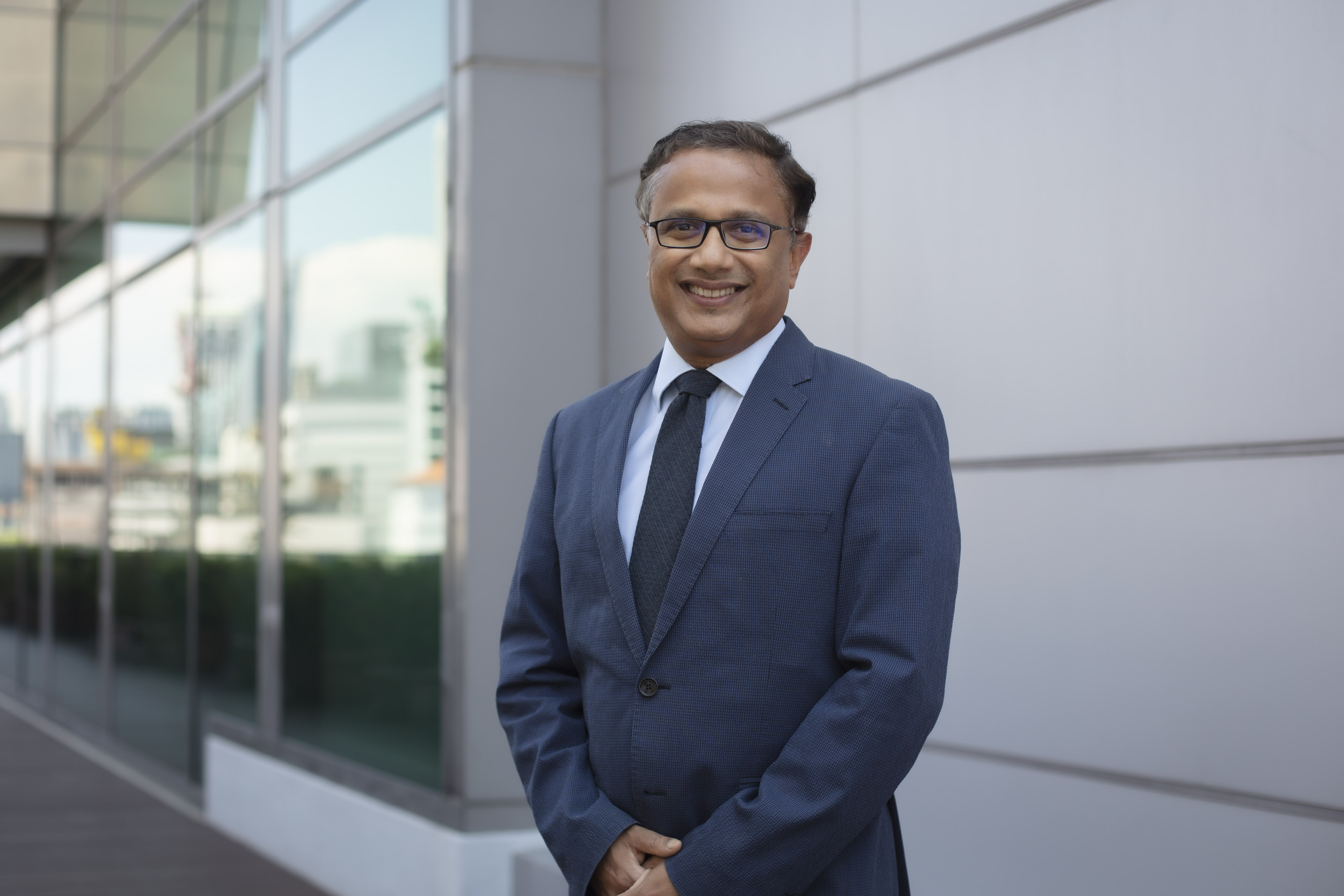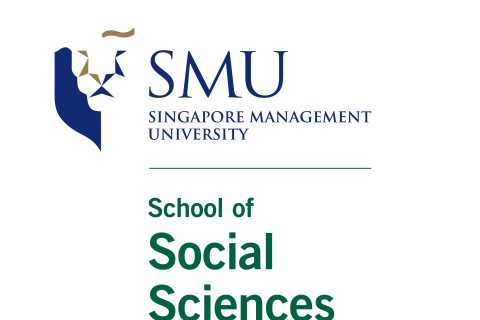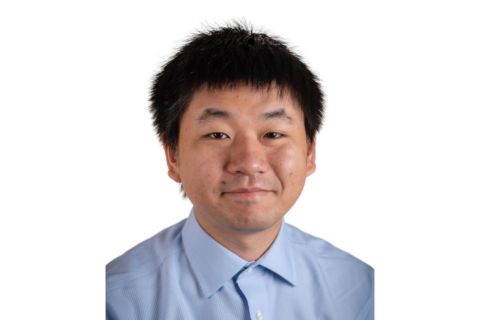
By Alvin Lee
SMU Office of Research & Tech Transfer– After two years of COVID-19 restrictions and hybrid online-physical arrangements, human traffic at the Singapore Management University (SMU) campus is slowly picking up. In-person lessons and meetings, albeit still subject to size restrictions, offer a glimpse into a future free of COVID-borne frustration.
For SMU’s Vice Provost (Research) Professor Archan Misra, it was a long time coming.
“Some of the initiatives that I wanted to execute, in terms of fostering deeper collaborations, building outreach with potential industry partners [in 2021] really got slowed down,” explains Professor Misra, who took over the post from Professor Emeritus Steven Miller in July 2020 – right in the middle of the pandemic.
He adds: “I reckon that I'm maybe six months behind where I would ideally want to be at in terms of the pace of progress, but I think this is a global phenomenon, so I just have to acknowledge and accept that.”
Professor Misra had been working through the pandemic to provide faculty greater opportunities for creating research impact, whether by providing teaching relief with the aim for securing and executing larger grants or by enabling the creation of promising collaborative partnerships with external institutions. One such initiative now underway is the series of MAKER (Multi-disciplinary And Knowledge Exchange Research) workshops.
“These are essentially informal brainstorming sessions where we gather between six to eight faculty from across the different schools to really come and discuss their research ideas, research aspirations on certain themes,” he explains. “What is attractive about them is that it is a process of serendipity where faculty members discover common interests. One of the most fascinating things I realised was that there were people approaching a common theme or problem, but with very different distinct disciplinary lens.
“They realised, for example, that they were looking for data sets that somebody else had. They were looking for partnerships that somebody else could enable. Six to nine months from now, I would want these partnerships to blossom in joint efforts that then position us well to go after and secure large thematic research grants on issues of high relevance to Singapore.”
Joint Lab
A major collaboration that Professor Misra is pleased to have helped realise is the A*STAR-SMU Joint Lab in Social and Human-Centred Computing (Joint Lab), with “the common objective to build world class research in social and human-centred computing”.
“The formation of the Joint Lab was really driven by the observation that A*STAR and SMU had complementary capabilities,” notes Professor Misra. “While A*STAR has a strong technology footprint with deep industry ties and a very competent but relatively small social science group, we're kind of the reverse. We have very competent computational peaks of excellence, but we probably have a larger set of offerings around social science from various schools.”
One area of focus will be analysing human behaviour and polarisation on social media and finding ways, via social sciences insights, to explain how people process information. The goal is to develop appropriate ways of intervention and subsequently build societal resilience and adaptability to disruptive changes and regulations.
“SMU has built an enormous capability around retrospective analytics, which is the ability to process this data, both structured and unstructured data, such as video streams and freeform text on social media,” Professor Misra observes. “What's perhaps not done as much is [explaining] why polarisation is happening or predicting how individuals will react to new emerging issues.”
The other area the Joint Lab initiative will seek to explore is what Professor Misra describes as “human-AI synergy” which he summarises as “design[ing] AI systems so that they can co-exist and co-operate interactively with humans”.
“This requires not just advances in AI capabilities like vision and natural language processing, it requires fundamental rethinking of the human-machine interface and the interaction paradigms that we use so that the AI understands our instructions and we understand where AI is uncertain,” says Professor Misra. “AI systems right now know what they know and that's where they stop.
“What we want them to do is get a better internal appreciation of when they're unsure or when they need explicit instructions from humans, such that they can solicit additional feedback in a way that… doesn't impose a heavy cognitive load on us humans.
“It should be done through natural mechanisms [such as] through voice commands and tone and facial or pointing gestures. It's that combination that we want to foster.”
Cities Institute
Professor Misra also told the Office of Research and Tech Transferof the Cities Institute, a university-wide initiative which is currently in development with the objective of tackling urban management and policy challenges in the 21st century. By taking a big-picture approach to SMU’s research capabilities across its schools and centres, the Cities Institute will examine issues including but not restricted to policies for promoting efficient and inclusive use of reconfigurable public spaces, the impact of the gig economy on urban workers and commercial services, and regulation and market mechanisms for developing sustainable mobility technologies.
While describing the Cities Institute as a “work in progress” Professor Misra says it will be built around three thematic pillars – the three V’s: Viability; Vibrancy; Vitality.
“Viability is about ensuring that the city's built environment design and infrastructure and operating models foster environmental sustainability,” he elaborates, adding that a city’s policies should result in sustainable outcomes. “Vibrancy is about ensuring that the usage policies and design of public spaces foster a sense of belonging and participation among citizens and residents, to promote things such as wellness and social cohesion. We must make sure to minimise the sense of alienation that can undeniably creep in, especially in a global and fast-paced city like Singapore, where even locals might not feel that sense of identity and belonging at times.”
The third V, Vitality, relates to the city’s “services and infrastructure adapting to the changing nature of work and the likely decentralisation of urban interactions”. Professor Misra explains within the context of the hybrid nature of working from home and going to the office: “What does it mean in terms of our consumption patterns, where they shift from the CBD towards your local residential estates? How does that impact F&B establishments? What sort of services will be offered in residential neighbourhoods versus the central business district and so on?”
Shaping future at SMU
After spending his initial months as Vice Provost appreciating the diversity of disciplinary knowledge within the university, Professor Misra intends to put extra focus on strengthening SMU’s international partnerships and research for the rest of 2022. With international travel gradually getting back on track, the Vice Provost hopes to craft meaningful partnerships with “two or three international partners, underwritten by tangible investments, to seed research on things that we are both mutually excited about”.
For a former corporate research engineer who spent 12 years in the telecommunications and computing industry, Professor Misra points out the common but fallacious perception of commercial organisations being “short-term or even myopic” in focus, especially in contrast to academia’s long-term and foundational goals.
“Most corporate research environments that I worked on actually had three-year, five-year, seven-year plans for how their research would gradually evolve to create impact through products and services. In contrast, in many education institutions, there really isn’t a centrally articulated vision of three, five and seven years, relying instead principally on individual ingenuity and serendipity” he points out. “We don’t do enough of seeding activities with clearly defined mid-term expectations of what comes to fruition in terms of external grants, in terms of tangible products or research prototypes three to five years from now. I've initiated a few changes to sort of encourage a greater attention to such pipeline management.”
While acknowledging the role of Blue Sky foundational research as a pillar of the university’s academic reputation, Professor Misra points to the value of translational research and an under-utilised source for such efforts: term-track faculty members.
“There are examples of top tier universities that do both academic research and translation output well, and they do that by using different sets of faculty,” he explains. “They don't task the same faculty member because it needs different personalities, different skill sets and so on.
“About 35 percent of our faculty are term track faculty. I think that's an under-utilised resource when it comes to creating research-driven impact because we should not be just focusing through the narrow lens of publications and prestigious research grants, but also building up a pipeline of translational projects that actually demonstrate the value that we have to the neighbourhood around us. It is extremely important for a university to have a demonstratable record of sustained tangible benefits to its local and regional communities.
“In short, again, my industry background of pragmatism enables me, I think, to better appreciate the differentiated possibilities with the term-track faculty and slowly create an environment where they can be incentivised and encouraged to more actively participate in our research activities.”
Back to Research@SMU May 2022 Issue
See More News
Want to see more of SMU Research?
Sign up for Research@SMU e-newslettter to know more about our research and research-related events!
If you would like to remove yourself from all our mailing list, please visit https://eservices.smu.edu.sg/internet/DNC/Default.aspx

